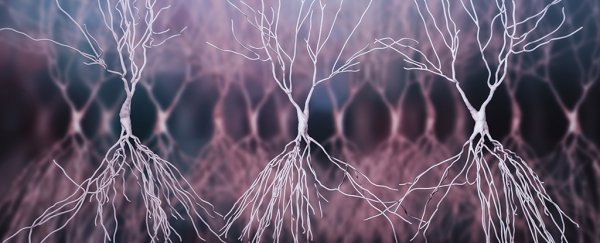Traumatic and stressful events in childhood can affect the brain into adulthood, scientists have shown, identifying for the first time specific alterations to key brain structures in the amygdala and the hippocampus.
Through magnetic resonance imaging ( MRI) scans of 35 adults diagnosed with major depressive disorder (MDD) and 35 healthy controls, cross-referenced with questionnaires, the new research found a link between neural tissue volume and childhood traumatic stress.
Negative experiences and maltreatment early in life are known risk factors for developing mental health disorders such as MDD, and the team behind this new study thinks that changes in brain function might be one of the reasons why.
"Now that we can actually identify which specific sub-regions of the amygdala or the hippocampus are permanently altered by incidents of childhood abuse, trauma or mistreatment, we can start to focus on how to mitigate or even potentially reverse these changes," says Peter Silverstone, professor of psychiatry at the University of Alberta in Canada.
Recent improvements in MRI scanning technology meant that these particular areas of the brain could be studied in detail in living human volunteers, building on previous research that looked at the link between stress and brain volume in animals.
The amygdala and hippocampus are of particular interest to scientists studying childhood development as they continue to grow and evolve for a long time after birth – they're associated with learning, memory, and the management of emotions, fear and stress.
The researchers suggest that damage done in the early years of life could then make the brain – and the amygdala and hippocampus in particular – more vulnerable to stresses that come along later in adult life.
"Although we did not find any significant effect of MDD or long-term antidepressant treatment on the amygdala subnuclei, we did find that childhood adversity was negatively associated with both hippocampal and amygdala volumes," report the researchers in their published paper.
The more we know about how stress and trauma affects the brain, and the specific structures and regions within it, the better we can tailor treatments to try and prevent or manage disorders – being able to target treatments is key.
The study's focus of childhood trauma within those with depression leaves plenty of room for further investigation. Research is needed to tease apart the effects of depression itself, including inherited factors, from the impact of adversity.
It has long been thought that the hippocampus is the part of the brain most at risk from the damaging effects of physiological and emotional stress, though there's still plenty more work to do to understand these relationships fully.
With depression one of the leading causes of disability worldwide, affecting as many as 1 in 10 people at some point, finding better ways to manage and treat depression could depend on studies such as this one.
"This may help shed some light on how promising new treatments such as psychedelics work, since there is mounting evidence to suggest they may increase nerve regrowth in these areas," says Silverstone.
"Understanding the specific structural and neurochemical brain changes that underlie mental health disorders is a crucial step toward developing potential new treatments for these conditions, which have only increased since the onset of the COVID-19 pandemic."
The research has been published in the Journal of Psychiatry & Neuroscience.
